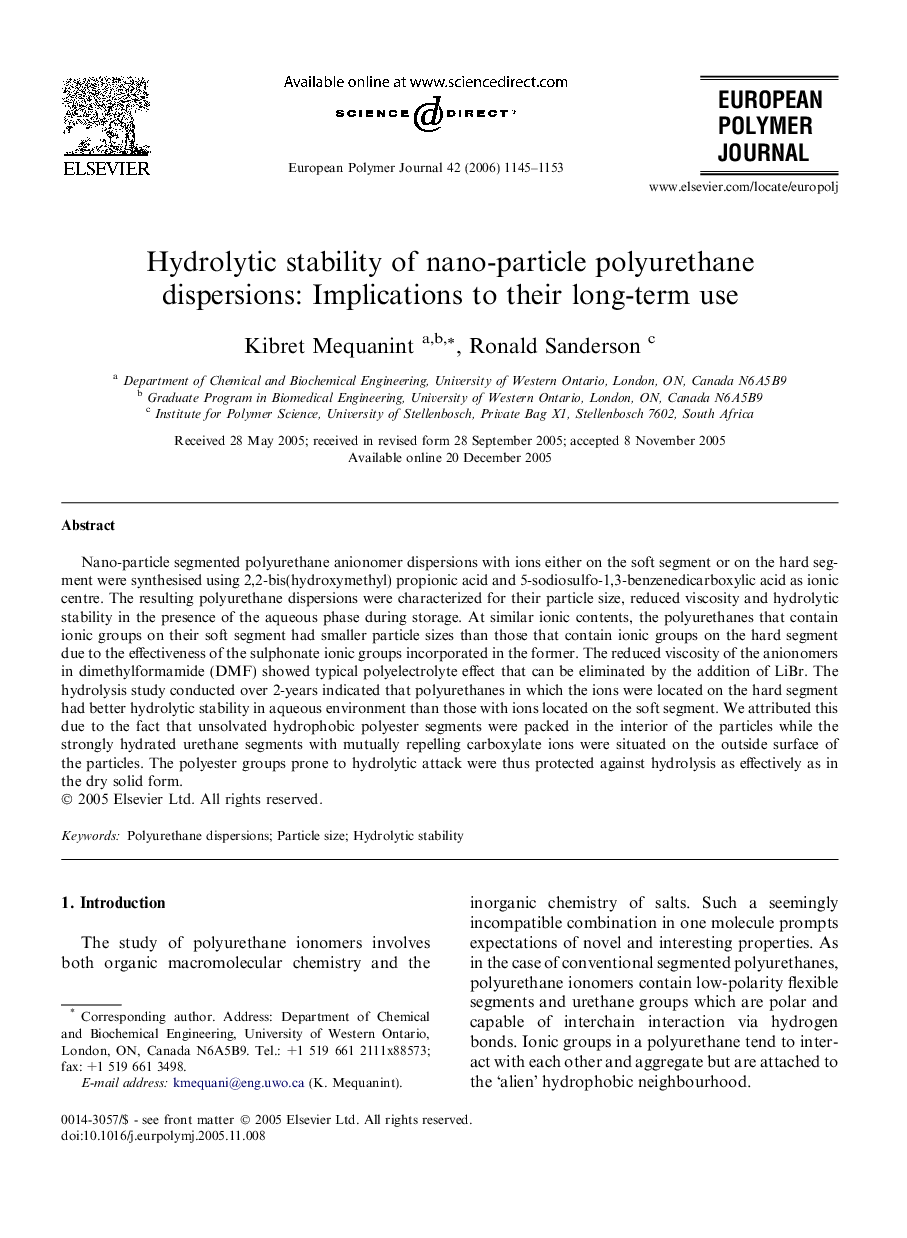| Article ID | Journal | Published Year | Pages | File Type |
|---|---|---|---|---|
| 1397008 | European Polymer Journal | 2006 | 9 Pages |
Nano-particle segmented polyurethane anionomer dispersions with ions either on the soft segment or on the hard segment were synthesised using 2,2-bis(hydroxymethyl) propionic acid and 5-sodiosulfo-1,3-benzenedicarboxylic acid as ionic centre. The resulting polyurethane dispersions were characterized for their particle size, reduced viscosity and hydrolytic stability in the presence of the aqueous phase during storage. At similar ionic contents, the polyurethanes that contain ionic groups on their soft segment had smaller particle sizes than those that contain ionic groups on the hard segment due to the effectiveness of the sulphonate ionic groups incorporated in the former. The reduced viscosity of the anionomers in dimethylformamide (DMF) showed typical polyelectrolyte effect that can be eliminated by the addition of LiBr. The hydrolysis study conducted over 2-years indicated that polyurethanes in which the ions were located on the hard segment had better hydrolytic stability in aqueous environment than those with ions located on the soft segment. We attributed this due to the fact that unsolvated hydrophobic polyester segments were packed in the interior of the particles while the strongly hydrated urethane segments with mutually repelling carboxylate ions were situated on the outside surface of the particles. The polyester groups prone to hydrolytic attack were thus protected against hydrolysis as effectively as in the dry solid form.
